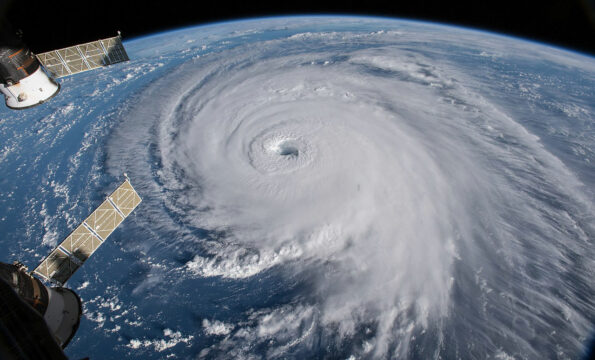CNBC, by Catherine Clifford: Record hot ocean temperatures could turbocharge this hurricane season, according to scientists at the National Oceanic and Atmospheric Administration.
NOAA scientists increased the chance that this year will be an above-normal Atlantic hurricane season to 60% on Thursday. In May, NOAA predicted a “near-normal” hurricane season with 30% likelihood of an above-normal Atlantic hurricane season.
The forecast revision decreased the likelihood of near-normal activity to 25% from 40% chance announced in May.
The revised outlook covers the remainder of the six-month hurricane season, which begins on June 1 and ends on Nov. 30, and forecasts a season total of 14 to 21 named storms with winds of 39 mph or greater. Of those, six to 11 could become hurricanes with winds of 74 mph or greater, and between two and five could become major hurricanes with winds of 111 mph or greater. The revised estimates published Thursday include the five named storms and one hurricane that have already happened, according to NOAA.
A “normal” year would have 14 named storms, seven hurricanes and 3 major hurricanes.
The peak part of the hurricane season is just getting started. It runs from August through October and historically encompasses 90% of all tropical storm activity, which is why NOAA releases a mid-season forecast revision each year.
The two primary and driving factors that will determine the strength of the hurricane season are the El Niño weather pattern and record-warm sea surface temperatures in the Atlantic, both of which historically are on “equal footing” as to the criticality of their impact on the hurricane forecast, said Matthew Rosencrans, lead hurricane season forecaster with NOAA’s Climate Prediction Center, on a call with reporters Thursday.
The El Niño weather pattern typically serves to “inhibit” tropical storm activity in the Gulf of Mexico and the Western Caribbean, Rosencrans said, while warmer sea surface ocean temperatures lead to a more active hurricane season.
The sea surface temperature for June and July in the main region where tropical storms develop in the North Atlantic was the warmest since NOAA records began in 1950, Rosencrans said, and are 2.2 degrees Fahrenheit above normal.
“A lot of the predictions from May did not forecast the continuation of record warm sea surface temperatures. It’s very rare for most models to forecast continuations of records,” Rosencrans told reporters on Thursday.
This combination of record-high sea surface temperatures and a late-blooming El Niño weather pattern is at the root of the uncertainty that remains for the rest of the season, Rosencrans said. “The forecast team has analyzed these numbers and debated the result of that analysis for hours in making this outlook,” Rosencrans said.
The revised estimate of 14 to 21 named storms puts this year close to last year when there were 14 named storms and relatively close to 2021, when there were 21 named storms. There were 30 named storms in 2020, “so we’ve seen some pretty busy years recently,” Rosencrans said.
The six to 11 hurricanes that are forecast for this hurricane season would also be relatively in line with recent years. There were eight hurricanes last year and seven in 2021.
These estimates are for total number of storms that will form, but are not forecasts of the number of storms that will make landfall, because current forecast models are only effective for predicting landfall starting one week out, Rosencrans said.
It’s smart to prepare for a potential storm now, Rosencrans said. Check out the emergency preparedness tips from the federal government at Ready.gov and the local emergency management website for your region, Rosencrans said. Prepare early and have a plan for what you’d have to do in case an evacuation is ordered.
Prophetic Link:
“The restraining Spirit of God is even now being withdrawn from the world. Hurricanes, storms, tempests, fire and flood, disasters by sea and land, follow each other in quick succession. Science seeks to explain all these. The signs thickening around us, telling of the near approach of the Son of God, are attributed to any other than the true cause. Men cannot discern the sentinel angels restraining the four winds that they shall not blow until the servants of God are sealed; but when God shall bid His angels loose the winds, there will be such a scene of strife as no pen can picture.” Testimonies to the Church, Vol. page 408.1.






Comments